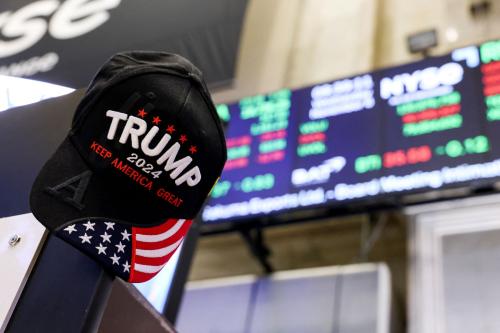Contrary to previous episodes of contagion, Latin America has shown remarkable resilience during the recent global financial crisis. There were a number of key differentiating factors between the recent and previous economic crises, including the strength of domestic macroeconomic fundamentals, such as low fiscal and current account deficits and a greater degree of exchange rate flexibility. Sound policies also produced low levels of short-term foreign debt and high levels of international reserves. An element of luck was also a factor, as commodity exporting countries in Latin America benefited from high terms of trade as a result of China’s robust economic growth.
But it would be misleading to say that the region has been immune to the global shocks. Not only has the cycle of recession and recovery in the Latin America region very closely followed that of the developed world, but the current setback in financial markets and the fear of a double dip are also likely to impact the region’s economic outlook.
To assess current economic trends, and following Eswar Prasad and Karim Foda’s Tracking Indexes for Global Economic Recovery (TIGER) for the G-20 economies, we have constructed the Latin America and the Caribbean Economic Recovery (LACER) Index which combines real, financial and confidence variables for the seven largest Latin American economies: Argentina, Brazil, Chile, Colombia, Mexico, Peru and Venezuela. These economies represent 91 percent of GDP in Latin America and the Caribbean.
The LACER Index is constructed using principal component analysis (PCA). This procedure obtains the linear combinations that capture the greatest amount of common information between a given set of variables. In other words, the LACER index takes the pulse of the underlying structure of a given dataset. For simplicity, it is scaled in a 0 to 100 range, corresponding to the historical minimum and maximum values.
The information on the real economy includes the following variables: employment level, export volume, import volume, industrial production volume and GDP. In all cases, we use the 12-month growth rate (GDP is the quarterly, year over year) of the seasonally adjusted data (not adjusted in the case of GDP). The financial sector variables include the 12-month growth rate in equity prices and stock market capitalization (all in domestic currency) plus the emerging bond spread (in basis points over U.S. Treasury) and the TED spread (difference between the 3-month Libor and the U.S. Treasury). The confidence data includes results from business and consumer confidence surveys (except in Venezuela where data was not available). To capture long-run trends as well as short-term fluctuations, we use monthly data (except for GDP, which is quarterly).
Findings
We begin by discussing the index capturing the real sector variables. After negative growth rates from the last quarter of 2008 until mid-2009, GDP, industrial production, employment and trade have shown a relatively fast recovery in the region. In the case of Brazil and Mexico, real growth indexes have recovered to pre-crisis levels. This does not mean that real variables (in levels) are better off now than before the crisis, but simply that their compounded growth rate has surpassed their pre-crisis growth. The real index in Colombia, Chile and Peru has not yet reached the pre-crisis level, suggesting that overall real growth remains at 50 percent of its pre-crisis peak. Argentina and Venezuela were experiencing a declining real index for some time before the recent crisis and as early as 2004. Argentina has shown some recovery, but Venezuela’s real index is imploding.
<not-mobile message=”To see charts associated with this article, please visit the Brookings desktop site.”>##1##
##2##
##3##</not-mobile>
After a plunge in mid-2008, the financial variables are recovering and have reached similar or higher growth rates than those of the pre-crisis period. All of the countries’ indexes seem highly synchronized, especially during and after the crisis. In more recent months and particularly after the Greek crisis, Latin American equity markets have experienced considerable setbacks. This pattern is captured in the country indexes as well as in the composite financial index.
In summary, financial variables have recovered faster than the real sector and confidence indicators. However, financial markets are experiencing yet another downturn which has had a negative impact on Latin America. So, region has not been immune to the problems in Europe.
##4##
##5##
In terms of the confidence indexes, Brazil shows a strong positive trend unaffected by the recent crisis. Mexico’s confidence index hit a historical low during the global recession in January 2009, and since then has been recovering but has not reached the pre-crisis values. The same applies to Colombia and Argentina. In Chile and Peru, confidence has recovered to close to pre-crisis levels.
##6##
##7##
The composite LACER index is still well below its highest point reached in January 2005 in part because the real economy index as a whole is still significantly below the mean of the pre-crisis era, except in Brazil. This is especially true in Venezuela, which is well below its previous maximum value. The region is also lagging in confidence indicators.
Differences in economic performance within Latin America are evident. Some countries are recovering very fast (Brazil and to some extent Mexico), other are moving forward but not quite yet at cruising speed (Colombia, Chile and Peru), and others are lagging behind (Argentina and Venezuela). This reflects a range of factors, but domestic policies play the most significant role in explaining the differences.
##8##
##9##
##10##
##11##
Individual Country Analysis
Argentina
Argentina is currently experiencing a very modest recovery in the real index which is mainly the result of job losses, declining trends in industrial production, and moderate GDP growth rates. The confidence index displays a strikingly negative trend, albeit showing mild signs of recovery after the crisis. Financial variables have performed well, explaining why the overall recovery index shows a moderate but positive trend in recent months. However, data for 2010 are showing signs of growth and it is likely that the real index will pick up significantly in future months.
Brazil
Brazil is experiencing the strongest recovery in the region. The real sector index is at its maximum historical value, indicating that growth in the composite measure of real sector variables is at its peak relative to the last decade. In addition, Brazil’s confidence index is displaying superstar behavior, in part because contrary to what happened in many other countries in the region, the composite measure of consumer and business confidence was not affected by the 2008-2009 financial plunge. The composite economic recovery index for Brazil has outperformed its pre-crisis level, suggesting that Brazil is now in a stronger economic position than before the crisis.
Chile
The increasing trend in the real index in Chile was interrupted by the collapse of the global economy during the recent financial crisis. However, the real sector is still significantly underperforming relative to the pre-crisis period. It is worth noting that Chile’s financial recovery was fast and peaked in January 2010, and confidence has also performed favorably in the recent months. In spite of this, the overall recovery index is still significantly below it historical maximum, implying that exports and employment are being negatively impacted by external factors.
Colombia
Colombia has been experiencing a modest recovery. The real sector index is still well behind its past values, and confidence has recovered but less than in other countries in the region. After reaching an all time low in April 2009, the compounded index has shown signs of recovery but is still 50 percent below its all time maximum. It is also below the Latin American average. This situation reflects low employment and export growth, partly due to the trade restrictions imposed by Venezuela.
Mexico
Mexico’s real and financial variables have fully recovered their pre-crisis growth rates, and its overall recovery index shows that the overall economic indicators are only 10 percent below their all time maximum. This is partly due to the financial variables which are performing better than in any other Latin America country. However, confidence is the weak spot, explaining why Mexico is still behind Brazil in terms of overall recovery.
Peru
Confidence and financial variables recovered fast in Peru after having lost ground during the crisis. The real sector index has also improved, but at a slower pace than in Brazil and Mexico. In recent months, financial variables have been negatively impacted, explaining why the overall index shows that Peru is performing relatively well. However, it is still 30 percent below its historical maximum value.
Venezuela
The real sector index is showing a declining trend, atypical for a Latin American economy. The financial sector variables do not show a distinctive feature, implying that nonfinancial forces are driving the results in terms of the overall recovery index. What is remarkable about this index is the persistent negative trend since 2004. Venezuela is now at a historical low in terms of economic performance, not necessarily in levels but certainly in growth terms.
These data sources were used in creating the indexes.
Business Confidence: Banco Central de la Reserva del Perú, Banco Central de Venezuela, Fedesarrollo, INDEC, OECD, Universidad Adolfo Ibáñez, Deloitte Argentina.
Consumer Confidence: Banco Central de Chile, Fedesarrollo, Michelsen Consulting, OECD, Universidad Torcuato di Tella.
Financial Variables:
- Equity Markets and Emerging Bond Spread: World Bank Global Economic Monitor; Stock Market Capitalization: CEIC Data Company, Ltd., Bloomberg (Chile, Colombia and Venezuela); TED spread: World Bank Global Economic Monitor and US Dept. of Treasury.
Real Variables:
- Employment: International Labor Organization; Exports, imports and Industrial production: World Bank Global Economic Monitor; GDP growth: The Economist Economic Intelligence unit.



Commentary
Latin America and the Caribbean’s Economic Recovery
July 20, 2010